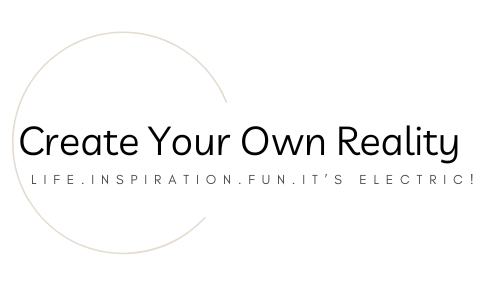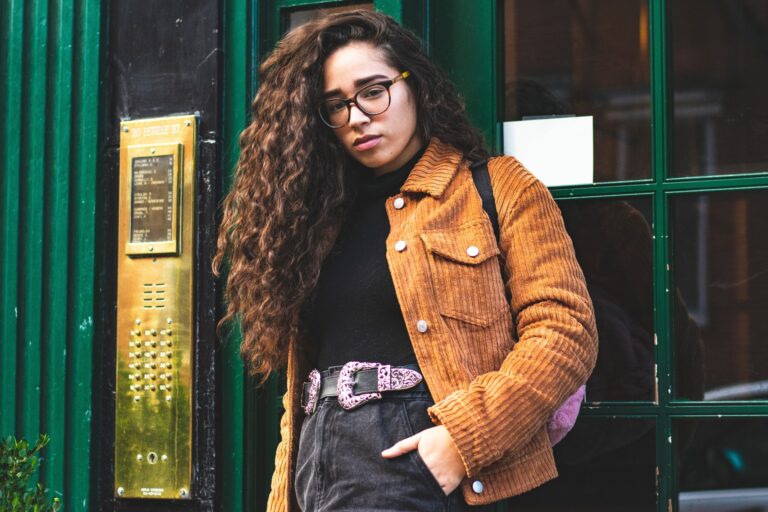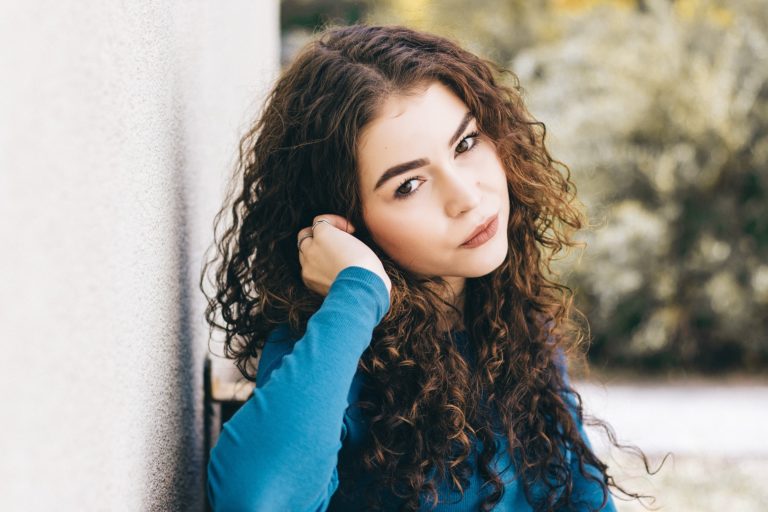How to Care for Your Curly Hair | Curly Girl Method Quick Start Series

Welcome to part three of the Curly Girl Method Quick Start Series! This post is going to cover how to care for your curly hair after you style it.
This is the last post in the three-part Curly Girl Method Quick Start Series. You can find the previous parts here.
Today, we’re primarily going to cover different methods for drying your hair and different options to sleep with your curly hair.
This will also include how to get root volume and tools that may help you care for your curly hair.
Please note: this page does contain affiliate links, which means if you purchase something using the product links on this page, I may get a small commission. This comes at no extra cost to you and helps keep this site running. Thank you!
Drying curly hair
This section is going to cover the dos and don’ts of drying as you care for your curly hair.
What not to do
In the first post, we talked about how avoiding heat is a key component to the Curly Girl Method. Curls thrive when they’re moisturized, and heat fries curls and dries them out.
Because of this, you’re going to want to ditch your blow dryer–at least, in the traditional sense.
We’ll discuss what you can use it for in a moment.
For now, just know if you’re used to using your blow dryer as it is out-of-the box (i.e. without a diffuser and on a high heat setting) this is going to change.
And like we touched on in the last post, you’re going to want to avoid using towels since they take away too much moisture.
What to do
Use a T-Shirt or Microfiber towel
If you’re not using a towel, you may want to use something so your hair isn’t dripping wet. I find I get the most success when I just scrunch and squeeze the moisture out of my hair, but that doesn’t work for most people.
If you’re in need of a towel replacement, try a t-shirt! Cotton absorbs less moisture than regular towels and you likely have one you can use laying around your house.
But if you’re very much a towel person and not in love with the idea of using a t-shirt, you can try a microfiber towel. This has a more towel-like texture, but takes less moisture out of your hair.
Diffuse
You can use your blow dryer with a diffuser on a lower heat setting and lower air flow. The lower heat keeps your hair from getting dried out, and the lower air flow, combined with the diffuser holds your hair in place to reduce friction, which will help reduce frizz.
Air dry
Air drying is the most Curly Girl friendly method, but that may not be practical for everyone. (Sometimes, you have places to be!) However, if you have the time and space, you might want to consider giving it a chance if/when you can.
Root volume
One problem a lot of curly girls have–especially in the beginning–is getting enough root volume in their hair.
This is typically because early on, your hair needs a little extra moisture in the form of product. The added product can weigh it down a bit, which may leave the crown of your head looking a little flat.
Two things that help with this are to either diffuse, or clip your hair up while it dries. This post goes into everything you need to know about getting root volume as your hair dries.

Sleeping with curly hair
Why you should consider sleeping with your hair protected
Sleeping with your hair in a particular protected style is important when you care for your curly hair. This does a few things for curly hair.
First, if you’re going to skip wetting your hair the next day and try to refresh it, you’ll likely want to sleep in a way that keeps your curls as intact as possible. Sleeping in one of the following styles can help keep your curls in some kind of shape, so you can simply reduce frizz and gently revive definition the next day.
(Though I should note, depending on how dry/damaged your hair is, it may take a few months before it’s hydrated enough to go a few days without wetting.)
Second, it reduces friction and moisture loss, which, as we’ve covered previously in this series, can help you get a better, healthier curl.
How to sleep with curly hair
I have a whole post about how to sleep with curly hair, which discusses the styles below. But this can give you a place to start.
Tools
A satin pillowcase/scarf
Sleeping on a satin pillowcase or wrapping your hair with a satin scarf can help your hair retain more moisture and reduce friction. It’s a smoother surface than a traditional cotton pillowcase and it pulls less moisture from your hair.
Your hair will likely be on your pillow for six to eight hours straight, so that gives the fabric of your pillowcase a lot of time to pull moisture out, which can make your hair frizzier than it needs to be.
As a result, the less prone your pillowcase is to absorb moisture, the less frizzy your hair will be the next day.
Styles
Pineapple
Gather your curls on the top of your and use a scrunchie to loosely secure them. This should keep you from sleeping on your curls and prevent you from crushing them as you sleep.
Bun
If your hair is really long, you may want to sleep with a bun on top of your head instead. It may take some of the curl out, but it’ll still be easier to bring back than if you ended up sleeping with your hair under your head.
Braid
If you’re less concerned about preserving the curl itself for the next day, a braid might be the way to go. This secures your hair, which prevents it from rubbing against your pillow too and much and reduces friction. This will ultimately help minimize breakage and moisture loss.
For more, you can find the blog post about how to sleep with curly hair here.
Side note: The blog post has an option for shorter hair, however if your hair is too short for any option, it’s not a crisis. Sleep with down/however’s comfortable (though ideally with some of the tools covered in this post).
If this applies to you, you may have to wet or dampen your hair on a more regular basis, but if your hair is that short, it likely won’t take as long to dry either.
I was wetting my hair every day early on, and it was a while before I started sleeping in a pineapple. My hair still curled and progressed nicely.

Looking for more guidance on your curly hair journey?
For beginners
If you’re new to curly hair care and looking for some help, you should check out the No-Stress Guide to Curly Hair Care!
After spending two years learning and caring for my curly hair, I wanted to create my own, in-depth guide to help fellow curlies create incredible curls in the easiest way possible.
It took me a while, but I eventually found an approach that helped me create a curly hair routine that fits into my life in the simplest way possible. And now I want to help you do the same!

For more intermediate/advanced guidance
If you’ve been on your curly hair journey for a while but still have some struggles, check out Curly Hair Problems!
After spending hours scouring the internet looking for solutions to my own curly hair problems, I found myself wishing for an easier, more comprehensive guide to the most common problems.
So that’s what I created!
Curly Hair Problems offers you 78 total solutions to the five most common curly hair care problems, including frizz, curl clumps, limp curls, product issues, and scalp issues.

Sound off: How did learning to care for your curly hair go? Tell us about it in the comments. And be sure to tell us a little about your hair type!



